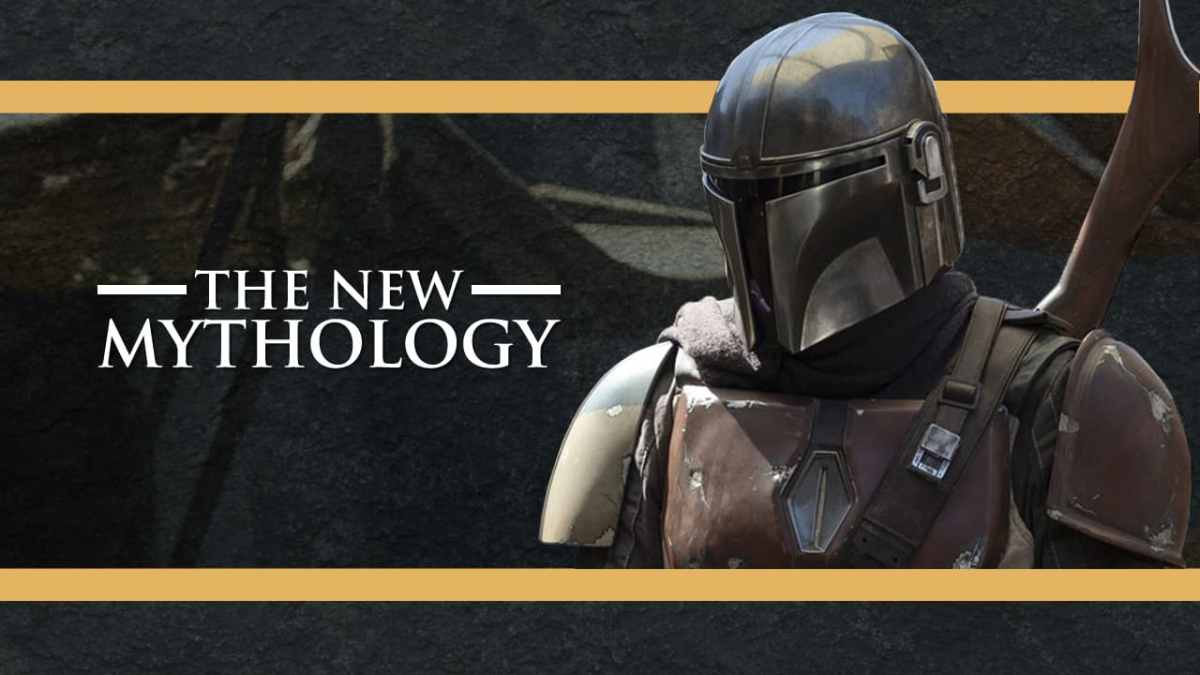It’s 2019, and there is suddenly value in knowing what the heck a Mandalorian is. For fans of the Star Wars Expanded Universe, it’s incredible that this obscure branch off the main trunk of series lore is now not only relevant, but it inspires the kind of money that can get Nick Nolte and Werner Herzog into makeup.
There’s surprisingly deep lore about the reclusive warrior tribe that produced the bounty hunter Boba Fett, or just the tribe whose armor he wore, according to the constantly twisting canon. With The Mandalorian, it finally feels as if Disney is unlocking the full potential of Star Wars to be a varied setting with more to it than a political conflict dominated by a small family of space wizards. That’s fitting, as the followers of Mandalore have always been a source of inspiration for creators writing on the margins of the series.
Darth Vader: “You are free to use any methods necessary, but I want them alive. No disintegrations!”
Boba Fett: “As you wish.”

Since his appearance in The Empire Strikes Back in 1980, Boba Fett has come to be a barometer of the state of Star Wars at any given time. The stoic bounty hunter with the raspy voice, cool armor, and heavy ordnance actually debuted during a 10-minute cartoon segment in the infamous 1978 Star Wars Holiday Special. The short tale finds the heroes crash landing on a weird alien planet, where Boba Fett provides them with some assistance before being revealed as a traitor and zooming away on his jetpack. Like all Star Wars material, this segment has been reused and remixed. The eponymous and as-yet-unnamed bounty hunter in The Mandalorian packs weaponry that closely resembles Fett’s gear in the cartoon.
Despite appearing for just a few moments in Empire and Return of the Jedi, Boba Fett became an instant sensation. In 40 years of appearances, he may be the single character who best epitomizes the gritty, Space Western flavor that’s been in Star Wars’ DNA since the very beginning of the series. It’s only natural that, once Star Wars left theaters for the first long stretch in 1983, the next generation of creators wouldn’t be able to leave the guy alone.
Boba Fett was just a bounty hunter in cool armor in search of a backstory when Daniel Keys Moran penned “Last One Standing: The Tale of Boba Fett,” a short story published in the 1996 collection Tales of the Bounty Hunters. Boba Fett became the assumed name of Jaster Mereel, an outcast Mandalorian. That was all upended with Star Wars: Episode II – Attack of the Clones, when we learned Boba Fett was actually a clone of the bounty hunter Jango Fett. Indeed, every Imperial stormtrooper was a clone of Jango Fett.

This forced subsequent writers to clarify that Jaster Mereel was actually a different Mandalorian who had raised Jango Fett and at one point became leader of the Mandalorian people. Releasing a year after Attack of the Clones, Knights of the Old Republic filled out some more details about the Mandalorians, casting them as a proud warrior race steeped in tradition. That series would codify the concept of the tribe’s leader going by the moniker Mandalore.
That was about as far as official canon had gotten when George Lucas hired Dave Filoni, an artist and director who worked on Avatar: The Last Airbender, as series lead for the animated series Star Wars: The Clone Wars. Setting their stories in the time between Episodes II and III, Filoni and his team vastly expanded Star Wars lore. They put Mandalorians front and center in major storylines, giving star treatment not only to a young Boba Fett and the clone troopers, but to the culture that raised Jango Fett. Mandalorians became rivals of the Jedi and enemies of the Old Republic. They were a complicated society with internecine power struggles and ideological factions who disagreed about how they should use their jetpacks and flamethrowers.
The beauty of that vast expansion of a specific part of one fan favorite character’s lore is two-fold. It gave fans things like Obi-Wan Kenobi crushing hard on a Mandalorian duchess and a black-bladed heirloom lightsaber. It also provided lofty heights for the proud warrior race to fall from. In Star Wars Rebels and The Mandalorian, they’re portrayed as an insular and diminished group of people. The Mandalorian’s first episode strongly suggests their culture has fallen into a slow, desperate decline. It’s one that longtime fans of the Star Wars TV shows have actually watched happen over the course of nearly a decade.

The Mandalorian creator Jon Favreau voiced one of the treacherous leaders of the violent, traditionalist Death Watch faction of Mandalorians in The Clone Wars, and Filoni serves as a writer and producer for the new series. Right from the cold open, it’s clear they’ve followed the story arc of Mandalorians to the next step, complete with a new tone that fits like a custom-made suit of blaster-proof armor.
The biggest triumph of The Mandalorian is that Pedro Pascal’s Mandalorian With No Name is not just another idealistic young rebel fighting evil like Rogue One’s Jyn Erso or the young Han Solo from Solo. In the first episode we see him both on top and in over his head, and we learn that there are people he regards with respect and others for whom he has no regard at all. Like the grim, pistol-packing gunfighter Clint Eastwood portrayed in movies like A Fistful of Dollars, we learn that there are lines even he will not cross.
It’s compelling in a way totally apart from the monomyth-inspired narratives we’ve gotten in nearly every other Star Wars spinoff since the prequel films pushed everything toward Jedi who can jump higher than Luke Skywalker and throw more lightning than the Emperor. It feels like Filoni and Favreau have used the legacy of a classic character to bring Star Wars back home.





Published: Nov 16, 2019 11:00 am